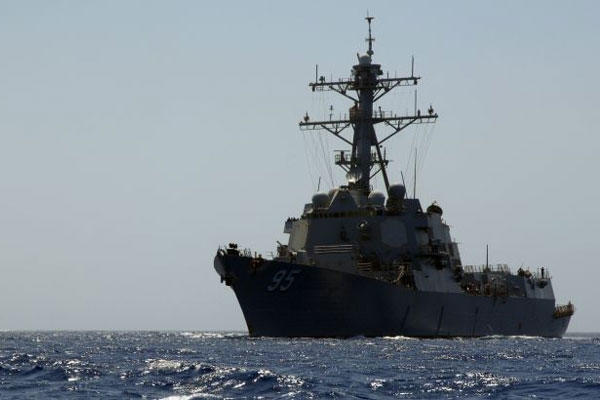The Navy is in the early phases of starting research to determine what kind of hull, ship defenses, propulsion technology and weapons systems will be engineered for a new class of DDG Flight IV destroyers to begin service in the 2030s.
Capt. Mark Vandroff, program manager for DDG 51 acquisition, cautioned that predicting what the Navy will build in 17 years is difficult, but it's a conversation that has to start early in order to deliver the ship the Navy needs.
Although the conversations regarding DDG Flight IV configurations are preliminary and likely to change as various technologies mature, lasers and electromagnetic rail guns are figuring prominently in the early discussions, Vandroff said.
Part of the discussion includes the business of war and the costs of ship defense systems.
"Some of the thinking involves senior leaders talking about getting on the other side of the cost curve. Right now if someone shoots a missile at us, we shoot a missile back at them. The missile we shoot at them cost about as much, if not more, than the missile that got shot at us. They are burning money and we are burning money to defend ourselves," he added.
A directed energy weapon or rail gun, however, might be able to offer an effective deterrent or ship defense system at a fraction of the cost of a missile, Vandroff said.
"The down side is this kind of technology does not exist today and even if it does, you have to look at what kind of maritime platform could you put it on and what that would look like. When that technology starts to get close to mature, then you will see the Navy start to figure out what it has to do in order to field that technology," he said.
The Navy is progressing with laser and rail gun technology. Senior Navy officials have routinely talked about plans for the service's Laser Weapons System, or LaWS, a high-energy, solid-state directed energy weapon slated to deploy this year aboard the USS Ponce, a transport dock.
"We're taking the laser weapon system prototype to sea this year. We are hoping to develop a system that we can produce and install aboard future warships," said Navy spokesman Chris Johnson.
The idea with LaWS is to deploy a low-cost, high-energy offensive and defensive weapon against a range of potential threats, including Unmanned Aircraft Systems, fast-attack boats and small-boat swarm attacks.
The Navy also plans to test a ship-mounted electromagnetic rail gun on Navy vessels, service officials said. The rail gun, which can hit ranges of 100 miles or more, uses electricity stored on the ship to generate a high-speed electromagnetic pulse sufficient to propel a kinetic energy warhead. The result is an inexpensive, high-impact and long-range offensive weapon, service officials said.
The Navy, which has been testing the rail gun at the Naval Surface Warfare Center in Dahlgren, Va., plans to integrate it aboard a ship by 2016, Johnson said.
The rail gun's hyper-velocity projectile can also be fired from standard Navy 5-inch guns as well as 155mm Howitzers, service officials said.
At the moment, Navy destroyers, carriers and cruisers are designed to have a kinetic interceptor layered ship defense system comprised of sensors, radar and various interceptor missiles.
The DDG Flight IV program, now in its infancy, is planned as an upgrade to the Navy's current Flight III destroyer program slated to being construction in 2016. Overall, the Secretary of the Navy's long-range shipbuilding plan calls for construction of 22 Flight III DDGs, Vandroff explained.
Flight III destroyers will be engineered with a series of technological improvements when compared to the current Flight IIA ships. For instance, the Flight IIIs will be configured with a next-generation Air and Missile Defense Radar, or AMDR, a radar that is 30 to 35 times more powerful than existing ship radar systems, such as the current SPY-1D, he said.
"You can see something one-half the size and twice as far away," Vandroff added.
Don't Miss a Single Military.com Story
To read the full article and get exclusive benefits, sign up today.
It’s FREE
Why am I seeing this? Visit our FAQs

























